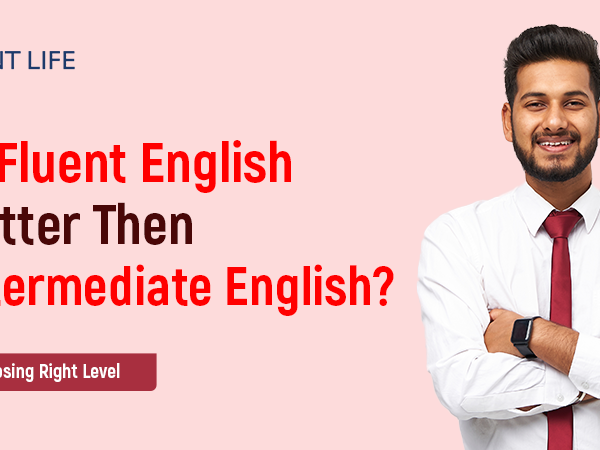Figures of speech is a form of expression that is used by people to make their thoughts more clear, forceful, and beautiful. Figures of speech are something like jewels of speech and that is widely used by people. But hardly anyone knows about it. Why? You will often find people speaking different types of figures of speech in their day-to-day language.
For example, falling in love, climbing the stairs of success are some common examples of metaphors. Why make a comparison using ‘light as feathers’, ‘hard as steel’ are some fine examples of similes.
Do you also often use these words? If yes, are you interested in knowing more? If yes then read out this article as this explains what a figure of speech is and different types of figures of speech in detail.
The Figure of Speech Explained: What is the Figure of Speech in English?
Before we proceed to the latest understanding, what is the figure of speech?
The figure of speech is a phrase that is used in the common language to create an effect. These words are used and arranged in such a way to achieve something poetic or imagery.
Figures of speech are highly effective as they add beauty, force, and clearness to the poem or writing. You will always find writers and poets constantly using these languages to create an impact on the masterpiece.
Also Read: Types of Figure of Speech in English: Examples of Figurative Language to Ace English
Importance of Figure of Speech
So, why exactly should you learn figures of speech? Before we get into details let’s find out the importance of the figure of speech.
# If you read books for poems you will always notice the writers and poets using them to enhance their writing. They used figures of speech to give their sentences more meaning and leave the reader wondering about the actual meaning.
# The figure of speech often makes your writings much more flavourful. This simply means that it makes your writings for poems interesting and engaging.
# You can also use figures of speech to transform your essay into a professional essay.
Also Read: English Words Used in Daily Life Conversation: Know How to Improve Your English
Different Types of Figure of Speech
Alliteration
Alliteration is the repetition of the initial consonant sound. The letters are correlated with each other in such a way that it looks like they are closely connected. This is often known as tongue twisters.
Sentences:
# Peter Piper picked a peck of pickled peppers.
# Black bug bit a big black bear
# She sells seashells by the seashore
# The sly, slithering snake snuck into the shed.
# The river rushed rapidly over the rocks
Allusion
The allusion is an expression used to recall the readers about something without actually mentioning it explicitly.
Sentences:
# Her smile is like kryptonite to me. (someone’s weakness)
# He decorated his garden as the garden of Eden
# Cake is my Achilles heel to my diet.
# She was about to open up Pandora’s box.
# Soham was the Einstein of his class.
Anaphora
The repetition of the same words at the beginning of successive clauses creates a sonic effect.
Sentences:
# She was sick and tired of hearing his repetitive lies.
# Every single day he came late to school.
# Now is the time to do something
# Stay safe, stay well and stay healthy
# She spoke with her friend with an open heart and an open mind.
Antanaclasis
Antanaclasis is the repetition of words within sentences in which the second word is used to convey something different from the first one.
Sentences:
# The woods are lovely, dark, and deep
# Put out the light and then put out the light.
#Mock mothers from their sons, mock castles down
# Stopping By Woods on Snowy Evening
Apostrophe
The apostrophe is used to address something or someone that is not present or is personified.
Sentences:
# Wherefore art thou Romeo?
# Yea, noise? Then I’ll be brief. O happy dagger! This is thy sheath; they rust, and let me die.
# Twinkle twinkle little star, How I wonder where you are
# “Is this a dagger which I see before me, the handle toward my hand? Come, let me clutch thee. I have thee not, and yet I see thee still.”
# Roll on, thou deep and dark blue Ocean
Assonance
It is a repetition of the sound of vowels in two words to sound similar.
Sentences:
# Peter Piper picked a peck of pickled peppers
# Sally sells seashells beside the seashore
# Winner, winner, chicken dinner
Cataphora
Cataphora is a word that is used to or for successive words or phrases.
Sentences:
# As soon as he reached home, he went to sleep
# If you are hungry, there is some cake left in the fridge
Chiasmus
It is a literary figure where a concept or theme is repeated but in the opposite order.
Sentences:
# Suit the action to the word, the word to the action
# Foul is fair, and fair is foul
Climax
Climax, as the name suggests, is a speech where words are arranged in such a way that their importance increases with each word.
Sentences:
In Shakespeare’s Romeo and Juliet, When Romeo saw Juliet lying on the death bed, he killed himself. Then when Juliet woke up she killed herself with the sword.
Cliche
The cliche is a phrase that is overused or has lost its original meaning.
Sentences:
# The racer started at the speed of light
# It was a matter of time when she realized that someone was there.
Dysphemism
This word is used to contempt or humiliate an individual. They are unpleasant and derogatory.
Sentences:
# Rats in the sewer
# Low lived dogs
Epigram
Epigram is a sarcastic phrase used in poetry or writings.
Sentences:
# Making must put an end to war, otherwise, war will put an end to humankind.
# No pain, no gain.
Ellipsis
It is a narrative device to omit a sequence of events to create a space for the reader to fill.
Sentences:
# He heard the knock at the door. Who could it be?
# And then the music began.
Euphemism
It is a mild or indirect word that is used in place of a harsh word to make a line or sentence less unpleasant or embarrassing.
Sentences:
# Yesterday, his grandfather passed away.
# May his soul rest in peace
Hyperbole
This figure of speech is used to exaggerate something to put emphasis or heighten its effect.
Sentences:
# She was light as a feather.
# Yesterday he slept like a baby.
Irony
The irony is the use of words to convey the opposite sense of their literal meaning .
Sentences:
# After entering an empty room, she exclaimed, “what a crowded place it is.”
# After watching him sleep, he exclaimed “he is working so hard.”
Litotes
They are understatements that it uses negative to express something affirmative.
Sentences:
# She was not sad.
# It was not a terrible journey.
Merism
This is a rhetorical device that combines two different parts of something to denote the whole.
Sentences:
# The audience was both young and old.
# She went both high and low during her preparation.
Metaphor
Metaphor is a comparison between two unlike things or a person that has something common in them.
Sentences:
# It is raining cats and dogs.
# Life is a play and we all are characters.
Metaplesis
It is a figure of speech in which reference is used by the use of something else.
Sentences:
# The early bird catches the worm.
# A lead foot is driving behind me.
Metonymy
It is a figure of speech where one word or phrase is used to denote something that is closely related to it.
Sentences:
# For writers, their pen is their sword.
# You will one day climb up the peak of your organization.
Onomatopoeia
It is a process of creating a word that imitates the sound associated.
Sentences:
# Clap
# Ding-dong
Oxymoron
Oxymoron is a figure of speech in which two different or contradictory words are used side by side.
Sentences:
# He was no better than living dead after her death.
# The movie was awfully good.
Paradox
It is a figure of speech that contradicts itself.
Sentences:
# Remember, less is more.
# I must be cruel to be kind.
Personification
This figure of speech is used to describe a thing that reflects a human trait.
Sentences:
# The alarm clock was telling still he was sleeping.
# Lightning danced along with the rain.
Pun
Use of words with different sometimes with similar meaning but with different words.
Sentences:
# Denial is the river of Egypt.
# A hippopotamus opinion carries a lot of weight.
Repetition
It is a figure of speech where words or phrases are repeated to create an effect or emphasize something.
Sentences:
# They walked hand in hand.
# The song went from heart to heart.
Rhyme
It is a use of words that have a similar ending sound. It is the most common figure of speech you can easily find in nursery rhymes.
Sentences:
# Jack and Jill went up the hill.
# Twinkle, twinkle little star, How I wonder what you are.
Rhetorical
It is a type of question that does not demand an answer. This word is used by writers to create a dramatic effect. They assume the reader already knows the answer.
Sentences:
# Do dogs bark?
# Is rain wet?
Simile
A simile is a comparison between two different things that have something in common.
Sentences:
# You are as clever as a fox
# He was as brave as a lion.
Synecdoche
It is a figure of speech where a part of something is used to represent the whole.
Sentences:
# She worked day and night as she had a mouth to feed.
# Ramesh is the breadwinner of his house.
Tautology
It is a figure of speech that states the same things twice but in different ways.
Sentences:
# Either he is lying, or he is not lying
# It is true or it is not.
Understatement
It is a figure of speech that a writer uses to reduce the importance or effect of something. Writers often use them to make something less serious.
Sentences:
# There is a little dent in your car
# This month it rained a little more than usual.
Also Read: English Words Used in Daily Life Conversation: Know How to Improve Your English
Conclusion
These were different types of figures of speech. If you want more such English-related articles and improve your day-to-day conversation, visit Fluent Life. This website offers affordable and customized courses to improve your English so that you can overcome your communication issues like a cakewalk.
Also Read: Daily Routine English Conversation: Make Your Communication Skills Effective






